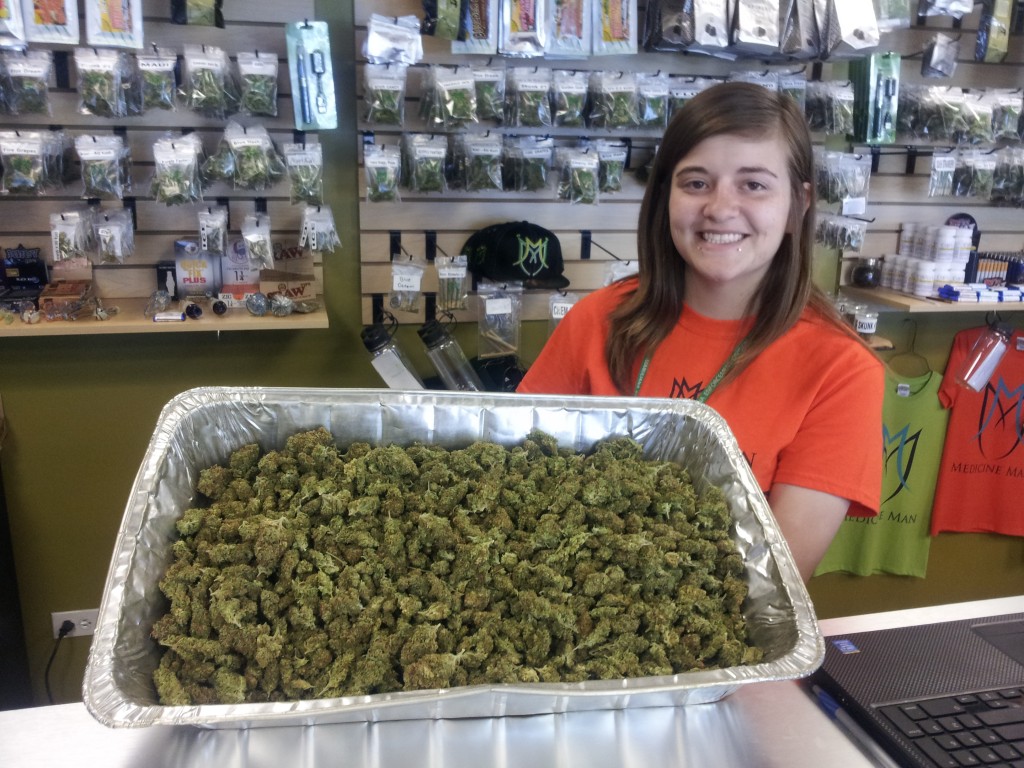The General
New Member
A new study suggests that medical marijuana could provide some relief from the national epidemic of prescription painkiller overdoses, which kills more Americans each year than car crashes do. States with medical marijuana laws on the books saw 24.8 percent fewer deaths from painkiller overdoses compared to states that didn't have such laws, according to the study published in JAMA Internal Medicine. That meant 1,729 fewer deaths than expected in 2010 alone, and states saw their overdose rates generally improve each year after their medical marijuana laws were passed, researchers found. Almost half of the states in the country now have laws allowing access to medical marijuana, with pain management as the primary reason for use. The study looked at the 10 states that implemented laws between 1999 and 2010 and the three states with earlier laws. Nine more states have passed laws since the end of the study period, according to the researchers.
The study isn't exactly a slam dunk for medical marijuana advocates, though. The authors say they can't make a direct causal link between state medical marijuana laws and lower painkiller overdose rates. There are other limitations to the study — for instance, researchers couldn't adjust for factors like socioeconomic status, race and patient diagnoses. Further, medical marijuana laws differ across the states, and implementation is usually the result of a messy and highly political process, making it difficult to measure the over all effects of those laws, write University of Maine professor Marie Hayes and Mark Brown of the Eastern Maine Medical Center in commentary published with the study.
"Rigorous evaluation of medical cannabis policies, including provisions that vary among states, is required before their wide adoption can be recommended," wrote study author Marcus Bachhuber of the Philadelphia Veterans Affairs Medical Center. The medical marijuana laws, researchers said, likely have the biggest effect on people with legitimate painkiller prescriptions, who account for about 60 percent of painkiller overdose deaths, according to the Centers for Disease Control and Prevention. That still leaves a large chunk of people who are getting prescription painkillers who shouldn’t.
The findings, if they hold up, seem important as policymakers try to get a handle on the prescription painkiller crisis. Those drugs kill more than 16,000 Americans each year, with deaths more than tripling in the past 25 years as prescriptions have also surged. And now the issue has come to the court system, with Chicago and two California counties recently suing five manufacturers of prescription painkillers, claiming they concealed the addictive risks of drugs like OxyContin and Percocet. Importantly, marijuana comes without a fatal overdose risk.
There's still a debate about the effectiveness of medical marijuana to relieve pain, though studies have shown it can help some patients. One study found that using medical marijuana allowed patients already taking opiates to reduce their painkiller dosage — a key finding, since higher painkiller dosages have been linked to increased risk of overdose deaths. But as the New York Times pointed out earlier this month, researchers still face significant hurdles in trying to understand the benefits of medical marijuana since it's categorized as a Schedule 1 drug, the most restrictive class. Notably, that's more restrictive than the classification for prescription painkillers.

News Moderator - The General @ 420 MAGAZINE ®
Source: Washingtonpost.com
Author: Jason Millman
Contact: Contact Us
Website: Is medical marijuana the answer to America?s prescription painkiller epidemic? - The Washington Post
The study isn't exactly a slam dunk for medical marijuana advocates, though. The authors say they can't make a direct causal link between state medical marijuana laws and lower painkiller overdose rates. There are other limitations to the study — for instance, researchers couldn't adjust for factors like socioeconomic status, race and patient diagnoses. Further, medical marijuana laws differ across the states, and implementation is usually the result of a messy and highly political process, making it difficult to measure the over all effects of those laws, write University of Maine professor Marie Hayes and Mark Brown of the Eastern Maine Medical Center in commentary published with the study.
"Rigorous evaluation of medical cannabis policies, including provisions that vary among states, is required before their wide adoption can be recommended," wrote study author Marcus Bachhuber of the Philadelphia Veterans Affairs Medical Center. The medical marijuana laws, researchers said, likely have the biggest effect on people with legitimate painkiller prescriptions, who account for about 60 percent of painkiller overdose deaths, according to the Centers for Disease Control and Prevention. That still leaves a large chunk of people who are getting prescription painkillers who shouldn’t.
The findings, if they hold up, seem important as policymakers try to get a handle on the prescription painkiller crisis. Those drugs kill more than 16,000 Americans each year, with deaths more than tripling in the past 25 years as prescriptions have also surged. And now the issue has come to the court system, with Chicago and two California counties recently suing five manufacturers of prescription painkillers, claiming they concealed the addictive risks of drugs like OxyContin and Percocet. Importantly, marijuana comes without a fatal overdose risk.
There's still a debate about the effectiveness of medical marijuana to relieve pain, though studies have shown it can help some patients. One study found that using medical marijuana allowed patients already taking opiates to reduce their painkiller dosage — a key finding, since higher painkiller dosages have been linked to increased risk of overdose deaths. But as the New York Times pointed out earlier this month, researchers still face significant hurdles in trying to understand the benefits of medical marijuana since it's categorized as a Schedule 1 drug, the most restrictive class. Notably, that's more restrictive than the classification for prescription painkillers.

News Moderator - The General @ 420 MAGAZINE ®
Source: Washingtonpost.com
Author: Jason Millman
Contact: Contact Us
Website: Is medical marijuana the answer to America?s prescription painkiller epidemic? - The Washington Post


